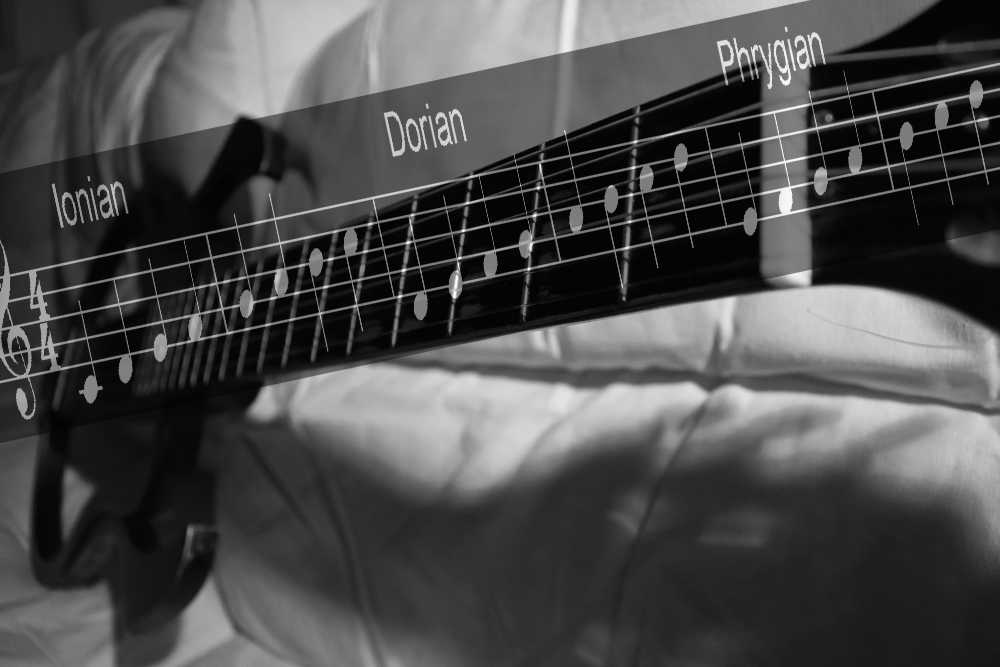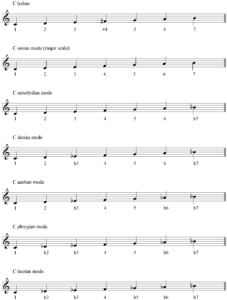
Modes Made Malleable
This post is the second in a series digging into the major scale modes and their sound. It will focus on applying the theory and applying it to the fretboard; and then move into the third post – getting the sound into your ear so that it is instantly recognizable: A.K.A ear training.
This lesson is going to concentrate on the practical aspect of modes, and how to reorder them so that they make sense on the fretboard and in construction. If you missed the first lesson, the one with all the theory and explanation stuff in it, here is the link: Modes Made Manageable.
Modes made what now?
So following on from the last lesson we learnt what a mode is and two different ways of thinking about them. This lesson will set them out aurally, adding another method of working them out, as well as how to construct them. First lets set them out in another list this time from brightest to darkest, which is not a traditional way of learning these bad boys, but it should be as it is a damn sight easier, hence malleable (molded) in the title.
- Lydian
- Ionian (Major scale)
- Mixolydian
- Dorian
- Aeolian
- Phrygian
- Locrian
First thing to note: the three major modes are first (lydian, Major & Mixolydian), followed by the three minor modes (dorian, aeolian & phrygian) and propping up the end is that locrian mode (a minor 7 b5 construction). This is directly related back to basic theory on scales and construction chords, if you are lost and feel this is like being inside the Vulcan Science Academy check out this post: Major Scale Harmony.
One Note Changes
The best thing about reordering the modes like this is working on one scale, the mother scale: major/ionian scale. All you need to do to get from one mode to the next is alter one note at a time as it descends. So…

To get from lydian to major a #4 gets taken off to construct the no-alterations-major scale; to get from that to mixolydian you flatten the 7th degree. It is easier if you play through the TAB and feel, and hear, those changes.
Another Method for Thinking
Below is the full chart of all the major scale modes. As you go down the chart you will find only one note at a time alters to get from one mode to the next.

Play through and identify each alteration as the next lesson will take this knowledge and use it for identifying modes aurally and how they really work. Next lesson will be on Aural Identification and how these modes actually work.

